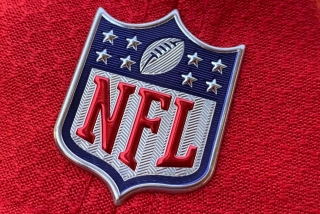Sports Have Varying Guidelines on AIDS
- Share via
Football is one of the so-called blood sports, as are boxing and wrestling.
These are the ones in which there is a greater likelihood of blood being spattered from player to player during competition--a concern raised again with the comeback of Laker star Magic Johnson, who is HIV-positive.
Yet the NFL has determined that the risk of transmitting HIV on the field is so small, it has only partial guidelines regarding open wounds.
Trainers and physicians must wear gloves when treating bleeding players, but there is no policy dictating when a wounded player must leave a game or when he can return.
“Within the NFL, there wasn’t the pressure,” said Elliott Pellman, New York Jet team physician. “We haven’t had a Magic Johnson yet--that we know of.”
Other sports and leagues have addressed the AIDS issue in various ways.
In boxing, contestants cannot be replaced during bouts and the sport does not want to suspend action to treat a bleeding fighter. So instead of worrying about open wounds, the sport is addressing the issue through testing.
The Nevada Athletic Commission, for instance, will not issue a license to an HIV-infected boxer. Marc Ratner, Nevada’s executive director, said Tuesday that testing ensures that boxers, judges, corner workers, photographers and fans are protected.
Testing varies from state to state, country to country. The California Athletic Commission has recommended that legislators adopt testing but such a bill has not been sponsored.
There are fewer restrictions on the corner men who treat the boxers between rounds. Some use the same gloves for multiple fighters on the same card.
“When you watch the people in the sport, it is not an inherently sanitary sport,” said Kim Welshons, a California athletic commissioner.
USA Wrestling, the sport’s governing body, adopted some of the strictest guidelines in sport. Wrestlers with the human immunodeficiency virus are not allowed to compete in sanctioned events and medical attendants who are infected are banned from treating bleeding athletes.
Any time an athlete bleeds during a bout, the action is immediately stopped and the wrestler is treated. Blood must be cleaned from mats, uniforms and bodies with a bleach solution and used towels and other cleanup materials are disposed of in a separate container for contaminated materials.
Major league baseball does not have a policy regarding open wounds, but the NHL and NCAA do, representatives from the groups said.
The NHL initiated an eight-point “common-sense program” in November, 1992. If a player is cut or bleeding, he should be removed as soon as possible until bleeding is stopped.
The NCAA instituted its policy in 1988, about three years before Johnson disclosed that he was HIV infected. In general, the policy states that any bleeding player should be removed from the event as soon as practical. The player is not allowed to return until the bleeding has stopped or is under control.
The NCAA does not restrict athletes from competing because they are infected with the virus that causes AIDS.
In 1988, reacting to fears of AIDS, soccer’s world governing body, FIFA, ruled that players have to wear shin guards to protect themselves against cuts.
More to Read
Go beyond the scoreboard
Get the latest on L.A.'s teams in the daily Sports Report newsletter.
You may occasionally receive promotional content from the Los Angeles Times.










